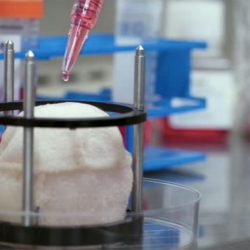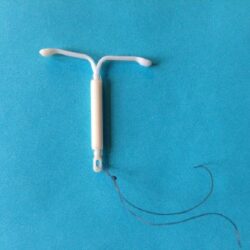Sex Change Surgery: How Does It Work?
Uncovering the processes behind sex and gender transformations.
A video animation produced by the European Association of Urology shows the complex and fascinating process of male-to-female sex reassignment surgery.
(Note: This video contains images that may NOT be considered safe for work)
What’s most remarkable is how this procedure creates a functioning vagina that allows a person to achieve orgasm.
How is the vagina created?
The surgery begins with a vertical incision along the scrotum so the testes can be removed. Next the skin connecting the glans (the head of the penis) with the shaft is cut and rolled down. The penis is then pulled through the disconnected skin and extended out through the previously opened scrotum below. The erectile tissue is removed and two holes are cut into the base of the loose penis skin.
A “neoclitorus,” which retains its sexual function, is formed by exposing a portion of the glans through one of these holes. The urethra is pulled through the second hole, below the neoclitorus, and cut open once outside the hole to serve as exterior vaginal skin.
The skin of the penis shaft is then inverted, pulled inside the body, and sewn into the pelvic tissue to create a vaginal canal and the labia minora (interior lips). Finally, remaining portions of the scrotum are cut and sewn into place to form the labia majora (exterior lips).
Male-to-female surgery is more expensive and considered a more difficult procedure than the female-to-male equivalent.
The neophallus: Constructing the penis
To fashion a “‘neophallus,” tissue is often taken from the forearm or another part of the body, which also provides some sexual function. Marci Bowers, a transgender obstetrician and gynecologist from California, claims that stretching the urethra to allow standing urination from the neophallus is the biggest surgical challenge.
Before undergoing genital surgery, many patients are required to live for a period of months as a recognizable male or female.
Hormonal gender changes
Changing gender is an incredibly complicated process. Many people might assume that the possession of a penis or a vagina defines whether a person is a man or a woman. This extreme oversimplification underscores a broad ignorance in today’s society about how gender functions, is performed, and reinforced everyday.
Changing gender involves psychological assessment. A therapist can diagnose someone with gender identity disorder or gender dysphoria, and then refer them to a doctor to begin hormone therapy.
Hormones have both physical and mental effects. They develop secondary sex characteristics such as more or less body hair, muscle restructuring, and skin and fat redistribution. Mental effects include changes in emotional processing as well as what’s referred to as a re-alignment of the body and brain, or the reduction of dysphoria. This is something transgendered people have often struggled with for most, if not all of their lives.
For female-to-male transitioning, a person is given androgens to promote masculine secondary sex characteristics. For the opposite, biological males are given estrogen and anti-androgens to inhibit their testosterone and encourage the development of feminine secondary sex characteristics.
Image source: Azreals-Art
Leave a reply
You must be logged in to post a comment.

















